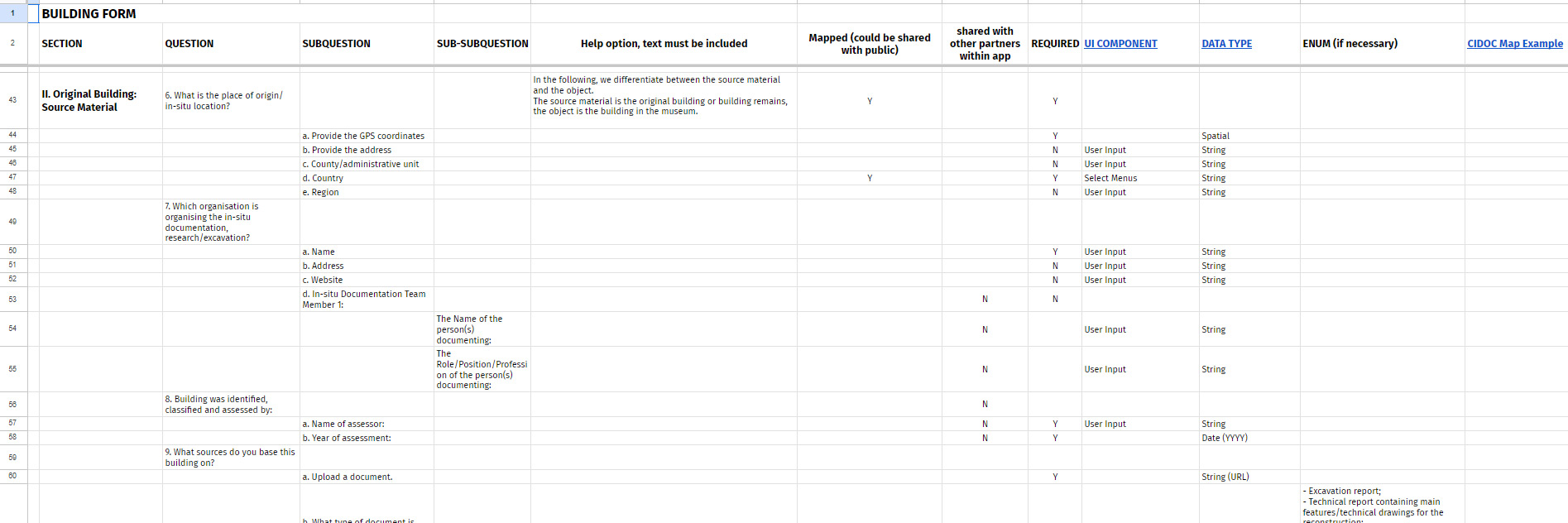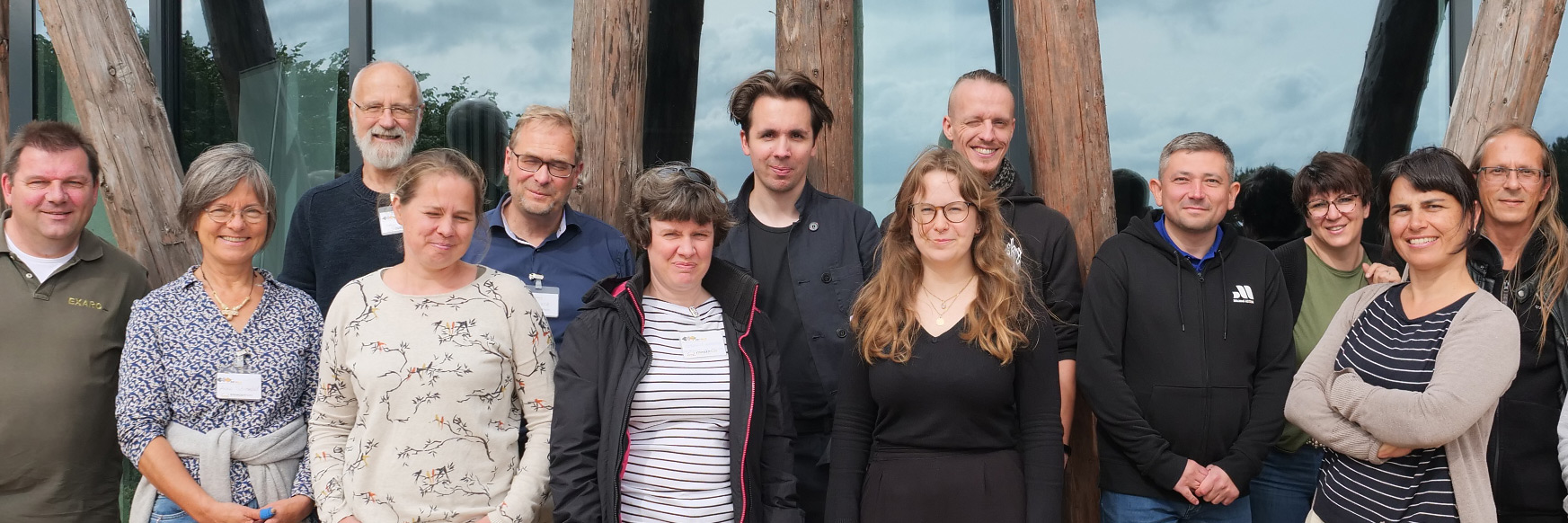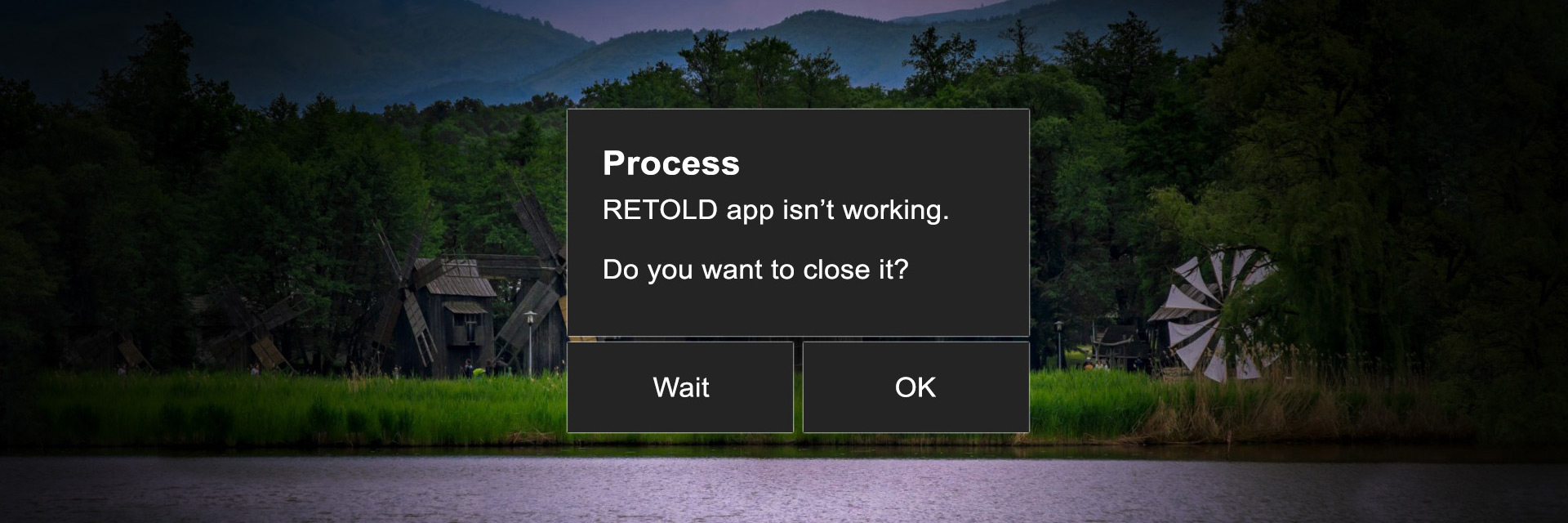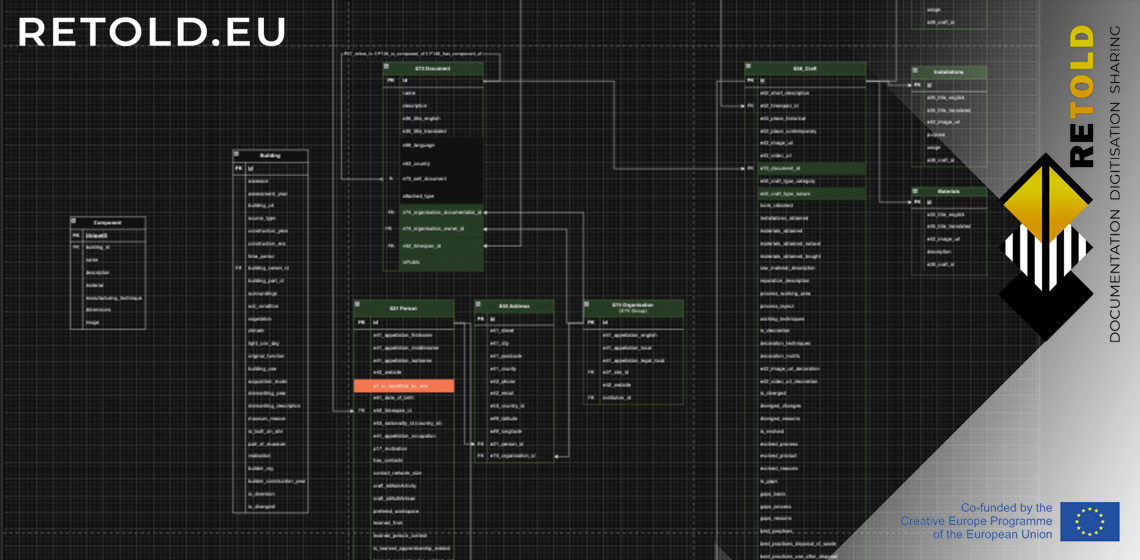RETOLD System
At the RETOLD meeting at ASTRA, Sibiu, a first functional prototype of the app for documenting museums was presented to RETOLD partners by UAB.
At this stage, in 2023, it was to document buildings. You mostly use photos and a sequence of questions for the initial setting up of a house, which then is followed by for example notes on maintenance.
It was an eye opener to see the prototype and what it could do for our museum (the Steinzeitpark Dithmarschen). After seeing what was possible at the ASTRA meeting, we got very motivated and wanted to practice right away. But because we did not have our own 3D models yet, we used the models from our partner in Berlin, Museumsdorf Düppel, as a start.
The look and feel were very promising and who knew that 3D models could be so useful and easy to produce? Most interesting was the walkthrough for maintenance, where you can place markers on an image or 3D model of the building. Partners tested this feature extensively. These markers can contain information, like text, video or images - and can be used to collect problems in and around the building in the museum.
A few months later, in the summer of 2023, a few non-RETOLD open-air museums were selected, to test the new app. However, the testing was aborted quite fast when several important issues with the app came to light.

Second attempt
Soon after that, there were changes in the team working on the app. This was the start of an intense cooperation between the RETOLD partners and the developer’s team in Barcelona. The existing source code was restructured, and the developing process was made more sustainable. The museum documentation workflows needed much more detailing before these could be transferred to the developers. The implementation of CIDOC-CRM was reintroduced with the help of specialists in Spain. The colleagues in Barcelona learned a lot about the future users and their needs.
While the developers restarted, the three museum partners in RETOLD continued to collect the data and sources of their craft activities and buildings. At the Steinzeitpark Dithmarschen the existing information also needed to be restructured, following the developments from January 2024. This way, it would be easier to later copy and paste the information directly into the craft activity and building documentation forms. The museums also discussed with each other about their 3D models.
RETOLD: CIDOC CRM and the Documentation of Buildings and Crafts
EXARC Journal Issue 2024/4
... From a technological perspective, the use of a semantic model such as the CIDOC Conceptual Reference Model (CRM) (ISO 21127) is essential for supporting digital storytelling in cultural heritage. Storytelling within this domain often involves intricate relationships between people, objects, events, and places... Read more

Languages
One of the issues which came up as well, was the language of the interface and the language of the information a museum would submit. If RETOLD should be a product which is used everywhere, using more than one language needs to be considered. Also, during the workshops, the language was and issue. The first time RETOLD met in Albersdorf, everything was in English and there was little dialogue between the staff and foreigners. This changed a lot when in the second meeting, only German was used. It was clear that the staff and volunteers had a better understanding of why they were doing this time, and their feedback helped a lot in changing the approach and in prioritising certain aspects above other. Based on these experiences, RETOLD will consider again if and how the platform can be multilingual.
It was an issue for us in the Steinzeitpark, that these extensive excel sheets were in English, and although some of our staff have a reasonable level of ability with that language, many of the forms require detailed input and vocabulary which we only know in our own language. It is important to add that we expect the people using the platform will not generally be museum directors, but mostly maintenance staff and tour guides. So, it is important for us that not only the questions and pull-down menus must be available in more languages, but also the input we add, the answer we give, must be allowed in different languages. However, a very important step towards better understanding information from other museums is the fact that everything is well structured.
It was decided to look at the languages after deployment of the 2nd version of the app, planned for May 2024.

By June 2024 we realised, we would not be able to complete the app in time. The development and evaluation of RETOLD’s minimum viable product (MVP) has been a crucial learning experience. The insights gained from our rigorous validation process led to a series of final recommendations and adjustments aimed at refining the methodology and addressing remaining issues that future integrators can lean upon. Its early technology readiness level aligns to the growing demands of future real-world applications. We decided to keep going, but without a formal app as our perspective, and we started discussing with colleagues who would be willing to take this further after project’s end. The RETOLD museums tested the methodology and workflow, and we ironed out last issues. Open answers are replaced by preselected options. We defined recurring elements which can be reused in different stages. For example, an individual crafter can do more craft activities, or a specific tool can be used several times.
RETOLD’s Perspective
RETOLD’s perspective is grounded in the creation of a standardised, scalable, and user-friendly digital framework that supports the collection, digitisation, and dissemination of cultural heritage data for open-air museums. From a technology perspective, this involves developing documentation tools that cater to the unique needs of open-air museums, which prioritise dynamically evolving processes and actions over static artefacts. It includes capturing detailed data about craft activities and buildings, storing this data in a structured and accessible format, combining this with video, images and 3D media that can be shared with diverse audiences and integrated into a common data space.
Following the second workshop (in German) with us here in Albersdorf, we understood better what RETOLD wanted from us and what we could get out of it. Luckily, we had already prepared a lot on paper over the past two years or so, but learning to understand what was relevant and what not was a process. For this purpose, it was also important to visit our colleagues in Berlin.
Saving our most important stories and details of our museum is certainly not an easy journey and we are not there yet. But it is worth it. We hope that sharing some of our experiences helps others.
With the documentation forms in place we started to collect the information
from the RETOLD museum partners.
Check the outcome of three museums, using the RETOLD methodology.





